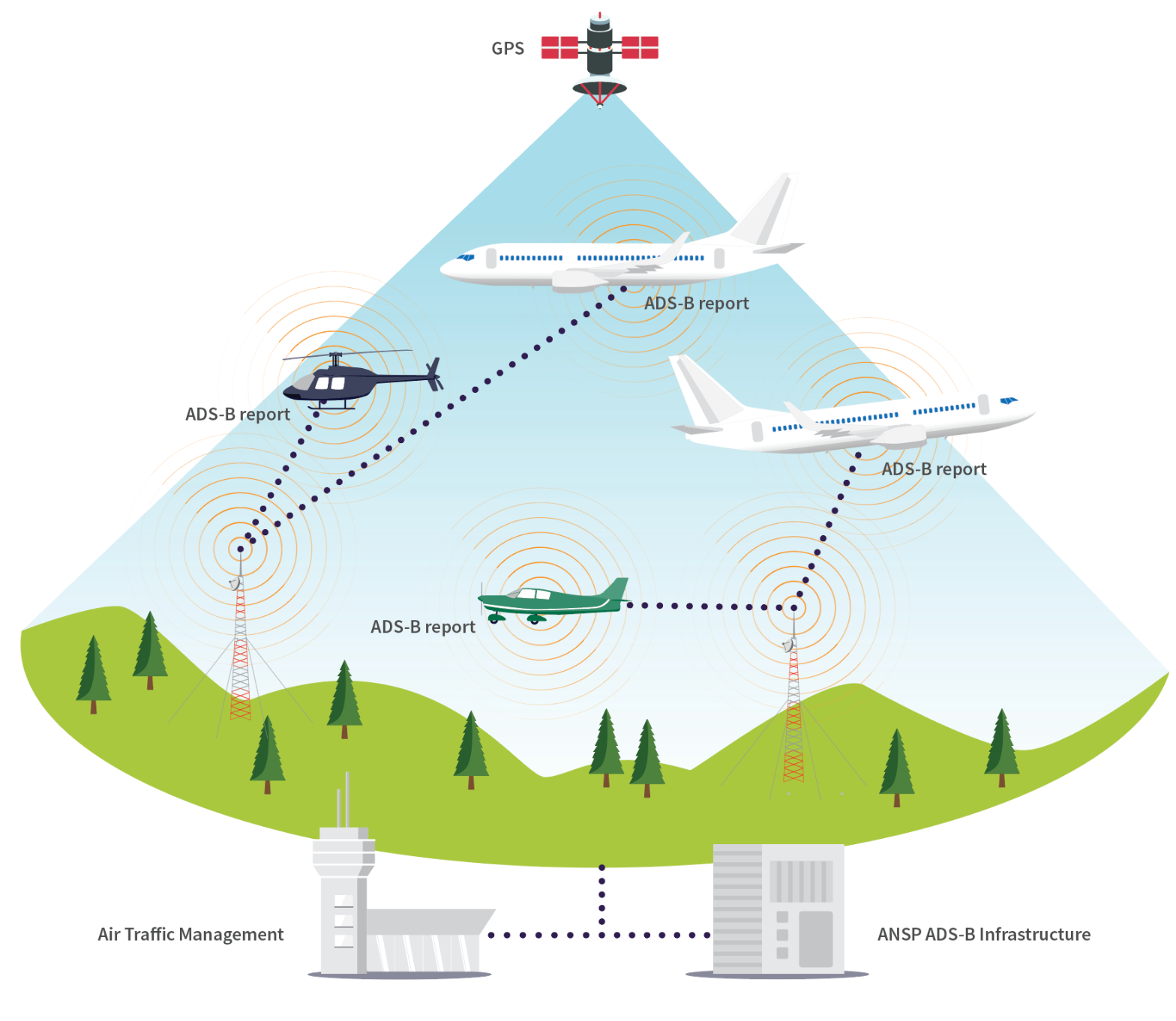Introduction to ADS-B
Automatic Dependent Surveillance-Broadcast (ADS-B) is a surveillance system that enables aircraft to receive data from navigation satellites via a global navigation satellite system (GNSS) receiver.

The aircraft then broadcasts information, up to twice a second, on its identification, position, altitude, speed, and intention. The broadcast system is the ADS-B transponder. ADS-B IN systems provide aircraft with the ability to ‘see’ and receive information from other ADS-B OUT equipped aircraft in range. The data received by ground stations is then transmitted to the air traffic management (ATM) system for display to air traffic controllers who use it to maintain aircraft separation in controlled airspace. This is different from the existing surveillance system, in which information about an aircraft’s position is obtained through radar signals.

Better surveillance
ADS-B also provides better surveillance coverage: 45 percent more of New Zealand’s airspace will be visible when ADS-B is fully implemented. That includes surveillance to the ground at all controlled aerodromes.
ADS-B OUT Timeline
The mandates for ADS-B OUT are in two stages:
31 December 2018
ADS-B will be mandatory for aircraft operating in transponder mandatory controlled airspace above flight level 245 from 31 December 2018.
31 December 2022
CAA has confirmed that from 31 December 2022 ADS-B OUT will be required in all transponder mandatory controlled airspace. Note that rules for the performance standards for all existing and new ADS-B OUT systems apply from 20 July 2018.
Benefits of ADS-B OUT
ADS-B provides better surveillance coverage and more accurate data, which improves safety and operating efficiency.
The main benefits of ADS-B OUT for you as an owner/operator are:

The option of installing ADS-B IN with ADS-B OUT which can significantly improve situational awareness.

A modern, more accurate surveillance system.

Visibility to air traffic control over a larger area in the New Zealand FIR because the coverage of ADS-B is greater.

More precise information on your aircraft’s position in an emergency, to a much lower altitude and with 45 percent more coverage than currently possible with secondary radar.
CAR 91.229 requirements to use ‘see- and-avoid’ will also remain. You will need to be aware of these if you’re considering introducing ADS-B IN into your cockpit. Not all aircraft around you will be ADS-B equipped, particularly if you’re flying outside controlled airspace. ADS-B IN will provide a useful but not necessarily complete picture of traffic in the area. ADS-B IN only works well if the ADS-B OUT transmits robust information. This is why it is so important that your ADS-B system has been tested and is transmitting compliant data.
The New Zealand ADS-B system
New Zealand will implement the 1090 MHz extended squitter (ES) ADS-B surveillance system. No other system is proposed to be approved for use in this country.
Squitter refers to the way data is transmitted by a Mode S transponder. Extended squitter refers to the extra data required to transmit the information required for ADS-B.